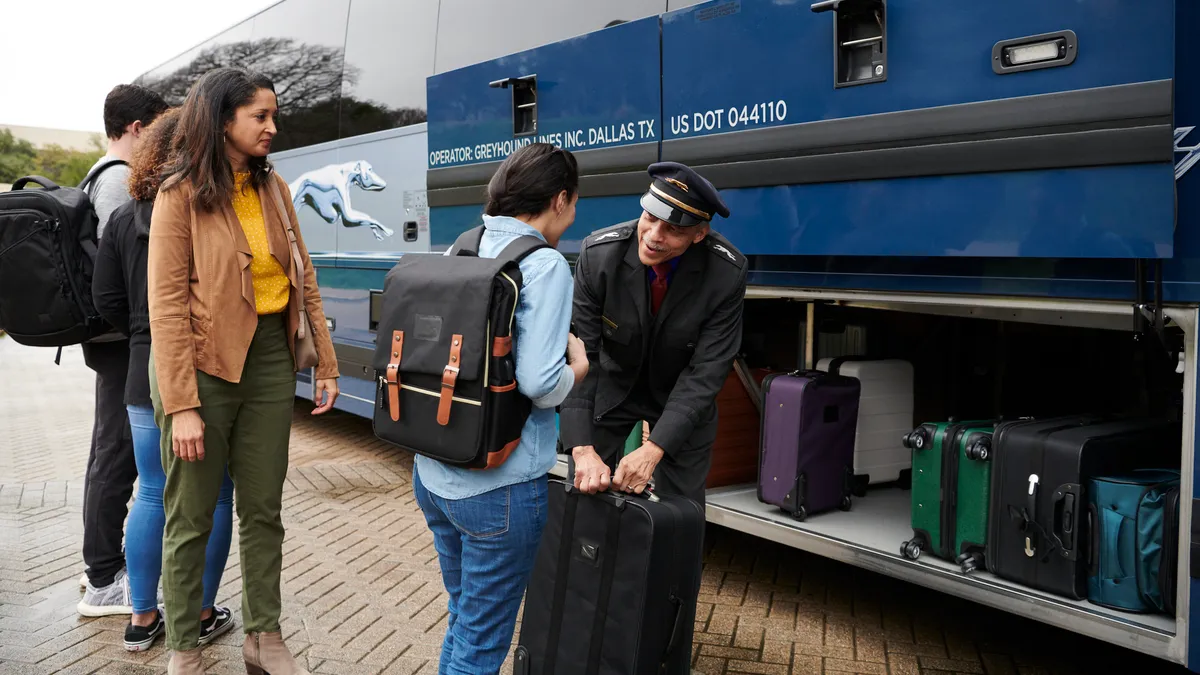Ridership on intercity bus lines is expected to return to between 80% and 85% of pre-pandemic levels by the end of this year, according to the Chaddick Institute’s latest annual report on the industry. But ongoing driver and mechanic shortages, coupled with closures of bus terminals and other issues, “continue to hurt the industry,” the report states.
After FlixMobility acquired Greyhound in October 2021, Greyhound’s former owner, FirstGroup, began selling the bus company’s real estate holdings, including its privately owned bus stations. By September 2022, it had sold all but two of its Greyhound properties. That resulted in many bus stops being relocated away from city centers or to curbside or other locations lacking waiting rooms and station amenities, the report states.
“This is putting a lot of pressure on state and local governments to help find fixes,” said Joe Schwieterman, director of the Chaddick Institute for Metropolitan Development at DePaul University, in a webinar Thursday. “You have lots of disadvantaged populations that really suffer when indoor waiting rooms are lost, or you end up [with stops] at convenience stores and hours are limited.”
Schwieterman explained that federal law requires public agencies to provide reasonable access to their transit facilities, but that can come at a price that private-sector bus lines can’t afford.
Some cities have made provisions for Greyhound to access new or existing transit facilities. In Los Angeles, for example, Greyhound now stops at Union Station in downtown LA, connecting with Amtrak, Metrolink commuter trains and local transit. In Atlanta, a new Greyhound station is under construction with funding from the Georgia state government, according to the Chaddick report. But Greyhound stations in Chicago; Cleveland; Houston; Kansas City, Missouri; and Nashville, Tennessee are all at risk, Schwieterman said.
“The problems this creates have yet to attract much attention from local policymakers, some of whom have done little to help travelers on intercity buses in the past. However, we expect municipal and state governments to face growing pressure to find long-term solutions,” the report states.
These closures and “chronic labor shortages” present service issues that could hamper ridership recovery, Schwieterman said. Intercity bus operators report an estimated shortage of up to 7,300 drivers, according to a recent survey conducted for the American Bus Association, leaving more than 20% of driver jobs unfilled. Work schedules, competition for drivers from other bus or truck companies, and wage rates were cited as contributing factors to the shortage of drivers in the survey.
As a result, buses are more crowded. “There are more paying customers per coach departure on many routes than before the pandemic,” the Chaddick report states.
Currently, intercity bus ridership hovers around 70% to 75% of pre-pandemic levels, Schwieterman said. Looking at ridership by region, he said on the webinar that Sun Belt states had come back strongly, especially in the border region of Texas. However, California, the Northeast and the Pacific Northwest “aren’t back as strong,” he said.
The Chaddick report also projects an increase in premium bus services. These buses have amenities that include food or beverage service on board, service attendants and more spacious seating. Napaway offers the equivalent of first-class airline treatment with private, lie-flat beds on overnight trips. “Our industry is heading for a much different future,” said Schwieterman.
But he warned that if the driver shortage persists and service quality suffers, it will be difficult for intercity bus operators to achieve the projected ridership recovery. The report predicts that in this scenario, “The ‘new normal’ will likely result in permanent service cutbacks on numerous marginal routes as equipment ages and operating costs escalate.”












